Discover your CdA, how aerodynamic you are, from past races. myWindsock can analyse all of your Strava Activities, Segment Efforts or uploaded TCX file from your power meter data. To use the features described you will require Premium membership and power meter, learn more about Premium.
IMPORTANT: Please ensure you disable Auto Pause on your GPS device when field testing.
What your CdA is and why it’s important
Knowing your CdA is useful to help you improve and squeeze out as much speed from your power. In most cases the most important determinant of performance in time trials is not Watts/Kg it is Watts/CdA. Here are a few ways you can use this number to improve your future time trial performances.
- Improve your position – small changes to your position can make large changes to your CdA. Make purposeful changes and record how your CdA changes for better or worse.
- A measurement of position discipline – when the adrenaline is pumping and you’re cranking the pedals as hard as possible it is easy to loose focus on position. Post race you can discover how disciplined you were at maintaining your position during the race. It is another performance measurement very much like your wattage.
- A more accurate time prediction – Entering a measured CdA into the Performance profile for your next race will dramatically improve the time prediction myWindsock generates. This means charts such as Rolling Average Speed will be of greater accuracy for your next race.
 Short video tutorial
Short video tutorial
This video shows how to extract the CdA of a the time trial from the ride file or Strava Activity and how to ensure your CdA is comparable to other time trial CdA measurements. Most of this is covered in the video however below the video I have included some further explanation and tips.
Loading up your time trial
To analyse your time trial there are two methods of upload to myWindsock.
- Through your connected Strava account, simply click on the Activity from the Strava Connect menu.
- Or from the course Strava Segment myWindsock forecast go to > Leaderboard Weather > My Efforts and select the effort. This requires power data to be included in your Strava upload.
- If you prefer to keep your ride data private you can upload directly to myWindsock from the homepage using the ‘ GPX/TCX’ button.
Creating an Aero Test profile [Optional]
This is a recommendation and not required, but will ensure your CdA is not affected by changes to your Profile settings. It is easy to forget the settings previously used for Weight, Rolling Resistance and Drivetrain Loss when calculating previous race CdAs. To keep it simple it is recommended to keep a profile for just CdA calculations.
This assumes that race to race you haven’t changed these actual values and they remain static in the real world. If you have altered tyres, gained/lost weight, changed the location of your power meter or the course has a significantly different road surfice, you may need to factor these changes in the CdA calculation.
Viewing the CdA of the Time Trial
The average CdA for your ride may include your warm up and cool down CdA. To extract the the time trial CdA you will need to access the ‘CdA Profile’ chart. Locate the line in the chart that represents your time trial. If your activity includes wam up and cool down your time trial is likely to look like the below. The point to point CdA of an out and back course is usually easy to spot.
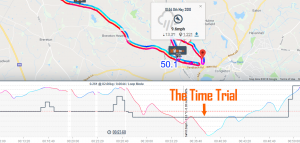
“I used my brakes, is that a problem?”
Braking will affect CdA calculations, however myWindsock can detect when you brake and remove these moments of braking from your CdA calculation. View the chart ‘Detected Braking Points’, this chart shows where on you ride you braked. Using this information we can remove the brake elements from your CdA calculation. This dramatically improves the accuracy of your CdA calculation.
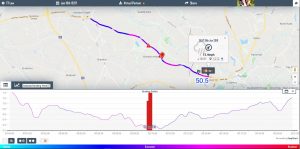
My CdA line has a step at the turn
The best CdA is calculated from a route in which you pass the same point of road twice. This can either be in the same direction ‘A loop’ or in opposite direction ‘out and back’. If your time trial course is slightly longer in one direction, so the start is up the road from the finish, this bit will not be as accurate and is probably shown on a different line. This uses elevation information rather than the more accurate loop. Look to the line that covers most of the time trial from two identical points on the course.
If at ‘the turn’ you have a different CdA experiment with increasing the Minimum Loop Distance. This will ensure a loop detection for more of your time trial.
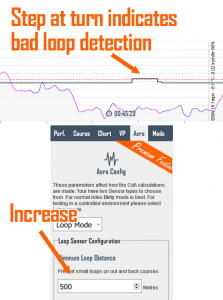
Go to > Settings > Aero Firstly increase the Minimum Loop Distance to a bigger distance but less than the distance of the two points on the course that you cover twice in the time trial. If this doesn’t resolve a better CdA line reduce the Loop Tolerance by a point.
A quick note on Yaw angles
A difference in wind direction and wind speed can produce a different CdA calculation. The greater the wind speed difference the larger the difference of CdA will be for the same position. Your position’s CdA will be better or worse for various Yaw ranges.
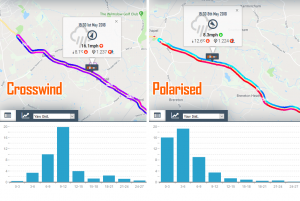
Yaw is determined by your speed and the wind speed and direction. The best description I’ve heard for explaining yaw is to think of the angle that a balloon held on a string would make to the bike if you were to hold it whilst moving. In a crosswind as you increase your speed the angle of the string to the bike reduces.
So in extraordinary weather you may expect to see a very different calculation of CdA. It is therefore best to discount these days.
To use the features described you will require Premium membership and a power meter, learn more about Premium.

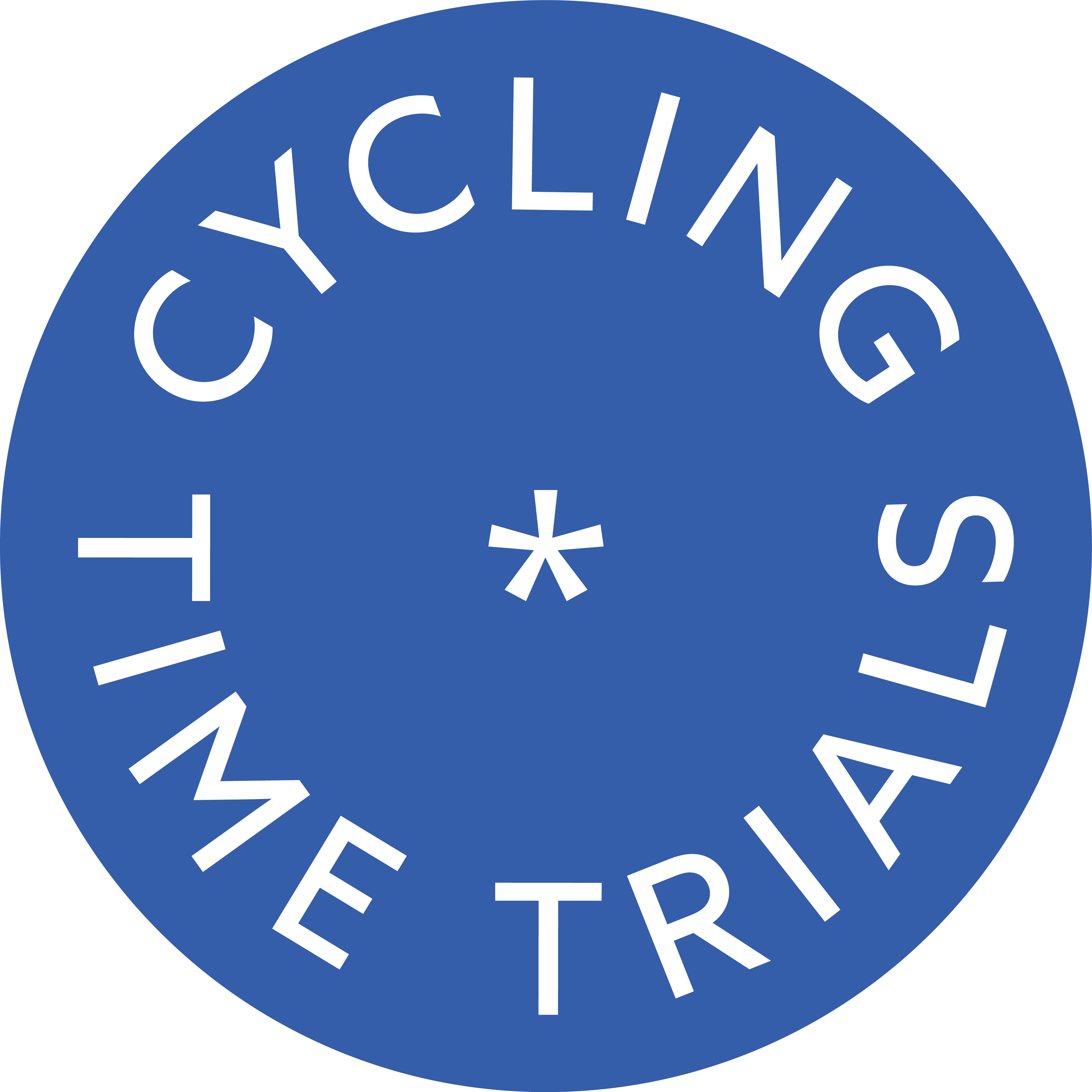 UK Time Trial Events
UK Time Trial Events





Do we have to use a loop? What about a point to point course? I have a well hidden false flat that is surrounded by trees that see very little traffic. Is there an optimal distance to test CDA at? The stretch I am looking at could easily accommodate 2.5-5k of distance.
Hi Rob the problem with a point to point course is that elevation becomes an additional variable. The purpose of using a loop is to remove elevation completely as a variable as you always start and end each loop at the same height.
You will still get a CdA calculation for a point to point however It’s precision run to run will be compromised and separate activities or files would be required for each run.